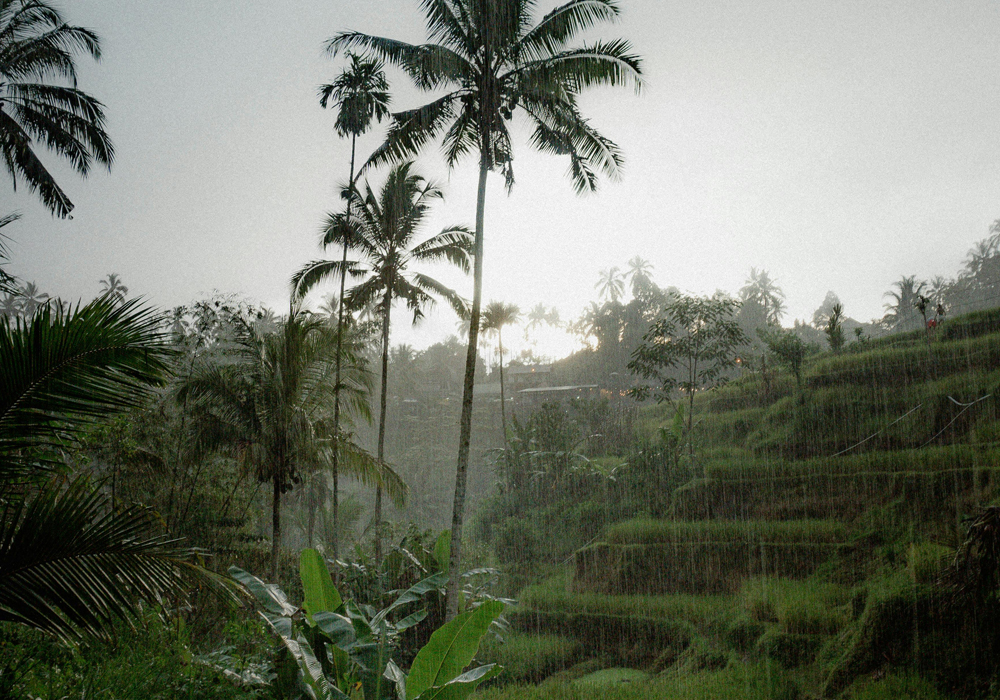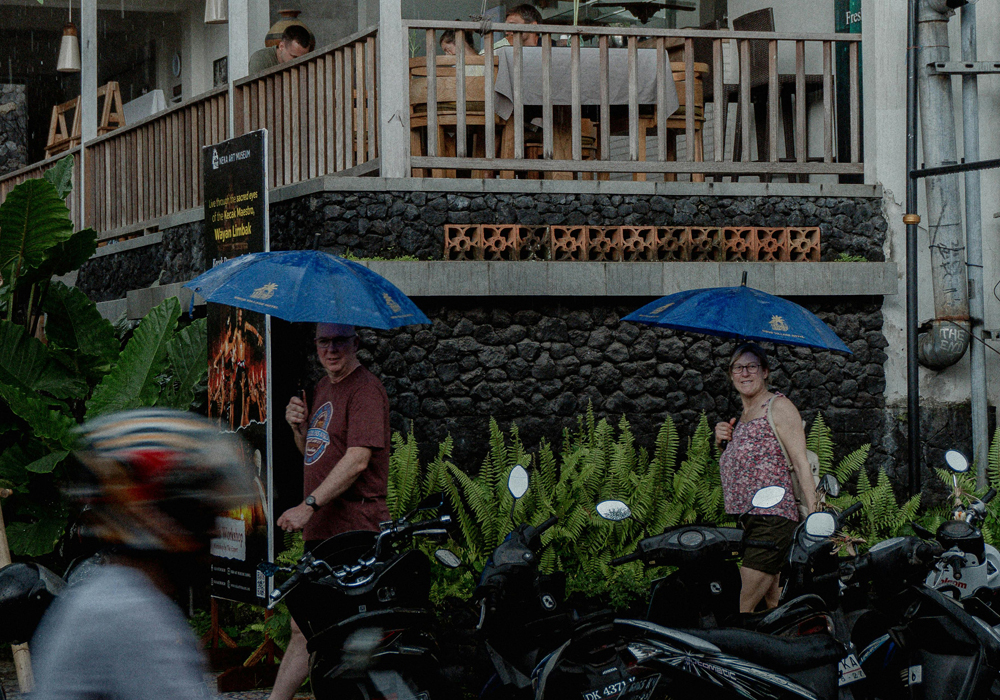Bali is currently experiencing unusual rain for July or Bali Rain July, a time when the “Island of the Gods” is typically renowned for its sun-drenched beaches and vibrant dry season, usually gracing the island from May to October.
If you’re in Bali right now, you might be wondering why the skies have opened up for what feels like an unusually long period. This unseasonal rainfall has certainly raised eyebrows, but rest assured, there are clear meteorological reasons behind it.
Why is Bali Experiencing Unexpected July Rain?
The extended wet spell in Bali this July is primarily due to a delayed onset of Indonesia’s dry season, as confirmed by the Meteorology, Climatology, and Geophysics Agency (BMKG). While July traditionally falls firmly within the dry period, several atmospheric and oceanic factors have contributed to this shift.
Warmer-than-usual sea surface temperatures around the Indonesian archipelago are playing a significant role, leading to increased evaporation and the formation of rain clouds. Additionally, a weak La Niña tendency, a cyclical climate pattern, is contributing to higher-than-average rainfall in various regions, including Bali.
Furthermore, Bali is currently navigating a transitional monsoon period. Even during what should be the dry season, the weather can be unstable, with occasional rain still a possibility.
Phenomena like the Madden-Julian Oscillation (MJO), an eastward-moving atmospheric wave, can also trigger rainfall activity even when the dry season is expected. In fact, a specific coastal flooding warning has been issued for July 9-12, 2025, for several beach areas, coinciding with the “new” moon phase and unusually high tides, which, when combined with adverse weather, can exacerbate flooding risks.
Is This a New Normal? Will Bali Rain Every July?

While this prolonged rainy period in July is a notable deviation from the norm, it’s crucial to understand that it’s not a guarantee for every year. Bali’s weather, like any tropical climate, experiences natural variability.
Global climate phenomena such as El Niño and La Niña, which influence rainfall patterns across Indonesia, are cyclical. El Niño typically leads to drier conditions, while La Niña is associated with increased rainfall. The current weak La Niña tendency is a key factor in the present situation, but these phases change over time.
While you shouldn’t expect week-long downpours every July, the current scenario does highlight the increasing influence of broader climate change. The warming of sea surface and atmospheric temperatures can disrupt traditional seasonal patterns, leading to more unpredictable and extreme weather events. Therefore, while the distinct wet and dry seasons will likely persist, their precise timing and intensity may vary more significantly year to year. Staying updated with the latest forecasts from the BMKG is always recommended for future travel planning.
When is the Best Time to Visit Bali?
Traditionally, the dry season, from May to October, is considered the best time to visit Bali. During these months, you can expect abundant sunshine, lower humidity, and minimal rainfall, creating ideal conditions for beach activities, water sports, hiking, and exploring the island’s many outdoor attractions.
The peak of this season, particularly June, July, and August, sees the most reliably dry and sunny weather, making it a popular choice for many travelers. If you prefer fewer crowds and slightly lower prices while still enjoying good weather, consider visiting in May, September, or early October.
Embracing Bali’s Rainy Charm: What to Do and How to Enjoy It
Even if you encounter a few rainy days in Bali, there’s no need to let it dampen your spirits. The island offers a wealth of indoor activities and unique experiences that truly shine when the skies open up.
Cultural Immersion and Creativity:
- Balinese Cooking Classes: Dive into the island’s rich culinary heritage by taking a hands-on cooking class. Learn to prepare traditional dishes like Nasi Goreng or Sate Lilit and savor your delicious creations.
- Art and Craft Workshops: Unleash your inner artist with a batik painting class, try your hand at silver jewelry making in Celuk, or explore pottery workshops in Ubud.
- Museums and Galleries: Explore Bali’s vibrant art scene at museums like Museum Pasifika or the Neka Art Museum, offering insights into Balinese and Indonesian art and history.
Relaxation and Rejuvenation:
- Indulge in Spa Treatments: Bali is world-renowned for its luxurious and affordable spas. A rainy day is the perfect excuse to treat yourself to a traditional Balinese massage, an aromatherapy session, or a rejuvenating facial.
- Yoga and Wellness Retreats: Many resorts and independent studios offer yoga and meditation classes, providing a serene escape from the rain and a chance to find your inner peace.
- Cozy Cafes and Fine Dining: Bali’s cafe culture is thriving. Find a comfortable spot in a charming cafe, sip on local coffee, enjoy delicious pastries, or explore the island’s burgeoning fine dining scene.
Family Fun and Exploration:
- Indoor Playgrounds: For families with children, indoor play centers like Mai Mai in Canggu offer a colorful and engaging space for kids to burn off energy.
- Shopping Malls and Markets: Enjoy some retail therapy at Bali’s modern shopping malls like Beachwalk or Seminyak Village, or explore covered local markets for unique souvenirs and handicrafts.
- Movie Theaters: Catch a film at one of Bali’s cinemas, or some beach clubs and restaurants even host special movie nights.
Tips for Enjoying Rainy Bali:
- Embrace Flexibility: Bali’s rain often comes in tropical downpours that can be intense but short-lived. Be flexible with your itinerary and be prepared to swap outdoor plans for indoor ones on the fly.
- Pack Smart: Bring a lightweight rain jacket or poncho, as well as waterproof footwear like flip-flops or sandals. A small, quick-drying towel can also be handy.
- Stay Connected: Many hotels and villas offer good Wi-Fi, allowing you to easily research indoor activities or simply relax and enjoy some downtime.
- Appreciate the Greenery: The rain transforms Bali into an even lusher, more vibrant landscape. The rice paddies become a deeper green, and waterfalls are at their most spectacular.
Ultimately, Bali’s allure extends beyond just sunny skies. By understanding the reasons behind current weather patterns and being prepared to adapt your plans, you can still have a truly magical and memorable experience on the Island of the Gods, come rain or shine.
